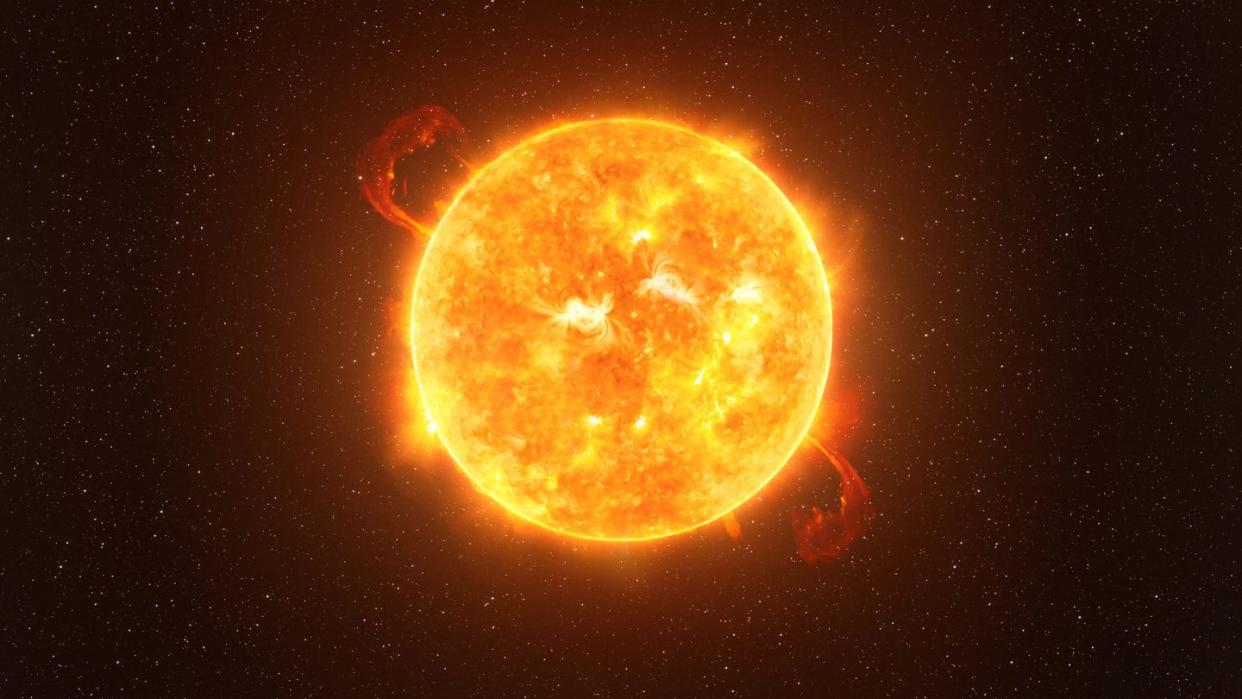A Giant Star Looks Like It's Defying Astrophysics

Betelgeuse is the 10th brightest star in the sky, and one the biggest known stars in our galaxy.
For a star so big, roughly 2,000 times bigger than our Sun, scientists are perplexed how it spins so quickly, at roughly 5km (3.1 miles) per second.
Now, a new study argues that data supporting that rotational speed could be tracking the star’s convection movement rather than its true rotational speed.
Of the 100 billion stars in our galaxy, Betelgeuse has to be one of the most intriguing. Floating around 700 light years away in the Orion constellation, this red supergiant is some 2,000 times larger than our Sun, with a 746-million-mile diameter. For those keeping count, that places Betelgeuse’s photosphere—the star’s outer shell—at about the same radius as the orbit of Jupiter, when compared to our Solar System.
Oh, and some scientists thought it was going to explode there for a minute.
However, Betelgeuse’s size and hypothetically explosive tendency aren’t its only head-scratching attributes. This bulky star is also spinning incredibly fast, with a rotational speed of about 5 kilometers (3.1 miles) a second. This speed is two orders of magnitude faster than scientists thought possible at this particular evolutionary stage, as stars usually spin down as they expand.
So, either Betelgeuse is doing something we currently can’t explain, or the data gathered by Chile’s Atacama Large Millimeter/submillimeter Array (ALMA)—the primary instrument comprised of 66 antennas that’s been used to analyze the star—isn’t telling the whole story.
A new study from scientists at the Max Planck Institute for Astrophysics thinks it’s the latter, alleging that ALMA may be recording the movement of the star’s convection cells rather than its true rotational speed. The results of the study were published in mid-February in The Astrophysical Journal Letters.
“Betelgeuse is so incredibly large and nearby that, with the very best telescopes, it is one of the very few stars where we actually observe and study its boiling surface,” Selma de Mink, director of the Max Planck Institute for astrophysics and study co-author, said in a press statement. And it’s that particularly boiling surface that is potentially at the center of this stellar mix-up.
As the researchers explain, if the Betelgeuse was a perfectly round sphere, then ALMA’s data regarding its breakneck spin would be a no-brainer. But the red supergiant is far from a perfect sphere. Instead, the star is more a boiling, bubbling miasma governed by a process known as convection. This process brings heat from the stars interior and forms bubbles, but unlike the air pockets in your boiling pot of pasta, these “bubbles” can be as big as Earth’s orbit around the Sun.
The Max Planck team, led by PhD student Jing-Ze Ma, used a new processing technique to create synthetic data from ALMA. In 90 percent of the cases generated, the boiling motion couldn’t be accurately accessed, and instead was read as a super-fast rotation.
To solve this conundrum, scientists will need higher resolution data to determine if Betelgeuse’s high rotational speed is actually a convective mirage. And luckily, such data was captured back in 2022, and is being processed. Once analyzed, the data could solve one of Betelgeuse’s many mysteries.
You Might Also Like

